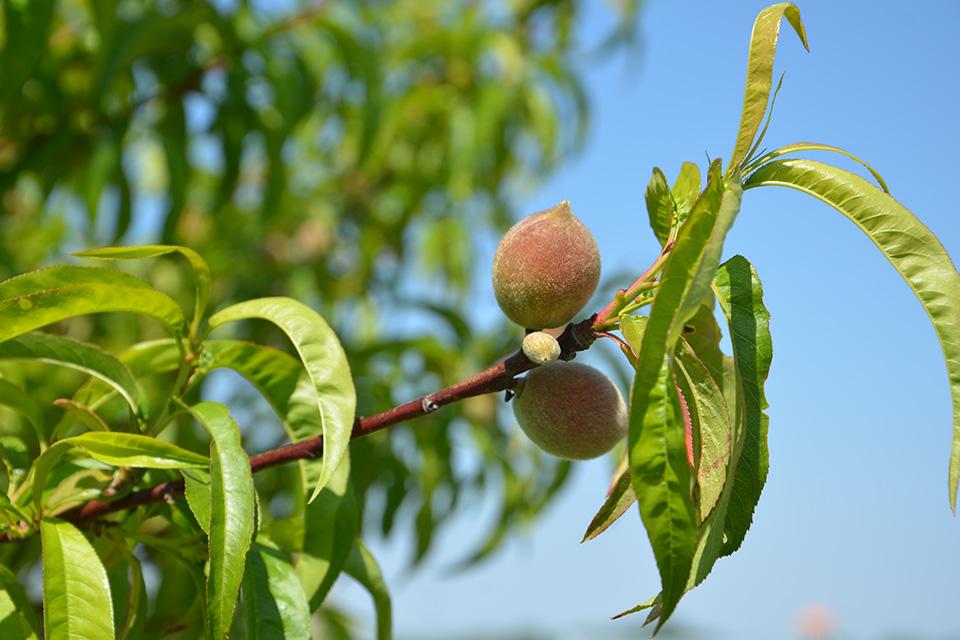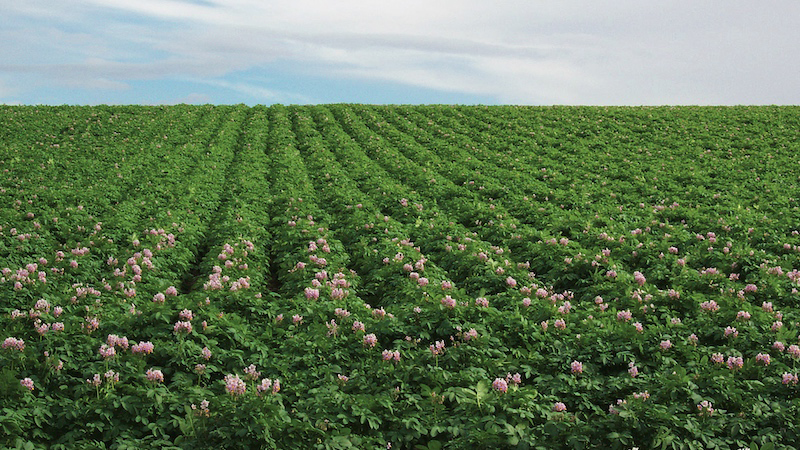How I’d Spend $1 Billion To Help Grow Better Peaches

Successful peach production takes lots of hardy flower buds, a few frost-free days during bloom, and lots of TLC from Mother Nature.
Photo by Gary Gao
Peach production is a highly challenging endeavor due to extreme weather conditions. Recently, I wondered, “If I were given one billion U.S. dollars to help our peach growers across the U.S., how would I spend it?”
Here is where my mind took me this time: I would spend a lot of money on developing super hardy and tasty peach cultivars, dwarf and compatible rootstocks, large acreage under high tunnels, a bunch of smudge pots, a cheap source of oil, and a sizable tract of land with high elevation near a large body of water.
Developing Super Hardy and Tasty Peach Cultivars: Peach breeding has been going on for many years in the U.S. and rest of the world. A perfect cultivar will likely differ across regions. In Ohio, ‘Contender’, ‘Red Haven’, and ‘Reliance’ seem to have done relatively well.
In a recent article by American Fruit Grower Senior Editor Thomas Skernivitz, he mentions that Drew Echols, a peach grower in Georgia, listed ‘July Prince’, ‘Scarlet Prince’, ‘Zee Lady’, ‘September Sun’, and ‘Big Red’ as better performing cultivars.
‘Flamin’ Fury’ PF-24C has been touted as a cold-hardy and frost-tolerant cultivar. I wonder what your experiences have been with it. There are some promising cultivars. However, it is too early to conclude that we have many perfect peach cultivars yet.
Rootstocks for High-Density Plantings: There has been plenty of work on rootstock development and testing. Since The Ohio State University is in the North Central region, an online report by the NC-140 technical committee, written by Dr. Rich Marini, former Professor of Horticulture of Pennsylvania State University, caught my eye. In “The Changing Peach Rootstock Picture,” he writes, “Rootstocks with 100% survival at the three northeastern sites (NY, MA, and PA) included Lovell, Rootpac R, Controller TM 7, and Controller TM 8. Guardian, Rootpac R, and the Controller rootstocks all had cumulative yield about 8 to 10% lower than Lovell, but Controller TM 7 and Controller TM 8 had cumulative yield efficiency about 17% higher than Lovell.”
High Tunnels for Peach Production: This approach may not be realistic since high tunnels are so expensive, and dependable dwarf rootstocks are not widely available. Growers must be able to fetch high peach prices to make high tunnels economically viable. Many years ago, I thought blueberry production in a high tunnel in the Midwest was a wild idea. I received a grant to study this approach. I am so glad that some growers started growing blueberries in a high tunnel or a greenhouse. You never know, peach production in high tunnels may become a thing in the not-so-distant future!
Smudge Pots to the Rescue: This is not a new idea. Quite a few growers have used this approach to protect their peach blooms. Some growers burn oil in smudge pots while others without smudge pots just burn whatever inexpensive materials they can get their hands on to create warmth in their orchards. Note that cheap oil is necessary to make smudge pots an economically viable option, and they are not allowed in some areas.
Location, Location, Location: A site with high elevation is better. However, a site with high elevation and a large body of water is the best. In 2023 several sites with high elevation in Ohio did not save the peach crop. However, sites with high elevation near Lake Erie fared much better.
Reaching for the Chemicals: KDL (Agro-K) and nanocellulose have been mentioned in a few articles during the last few years. In the case of KDL, some growers believe the material can protect peach blooms, while others are not convinced yet. It is hard to know. Regarding nanocellulose, my fellow columnist Dr. Dario Chavez writes, “In our results at the University of Georgia for peach, nanocellulose materials showed encouraging results as a freeze protection strategy, but several questions in deployment, consistency, and as a reliable technology still need to be addressed.”
Finally, we must ask Mother Nature to help. After all, favorable weather conditions from a gentler Mother Nature will save us a lot of headaches!
If you were given $1 billion to help American peach growers, how would you spend it? Comment below.










